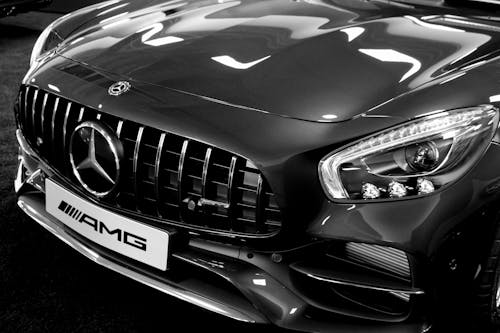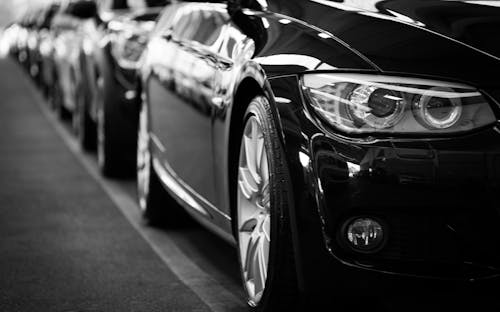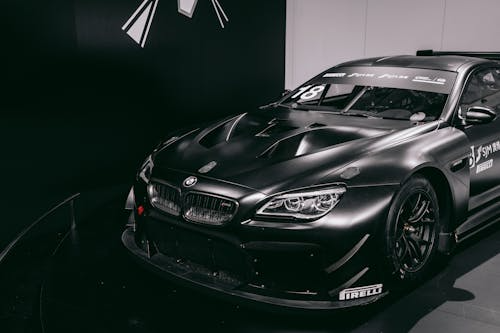From Fan-Cooled to Fanless: The Technological Evolution of Automotive LED Headlights|BLIAUTO Professional Insight
Bliauto examines the evolution from fan-cooled to fanless automotive LED headlights, offering professional insight into brand manufacturers' LED headlights, manufacturing LED headlight techniques, and brand LED headlight design for efficiency and reliability.
- I. Introduction: Why Focus on the Cooling of Automotive LED Headlights?
- II. The Cooling Dilemma of LED Headlights: Why Were Fans Needed?
- 1. Temperature Sensitivity of LED Chips
- 2. Complexity of the Automotive Environment
- 3. Advantages of Fan Cooling
- III. Pros and Cons of Fan-Cooled LED Headlights
- IV. The Rise of Fanless LED Headlights
- 1. Technical Background
- 2. Advantages
- 3. Application Trends
- V. Key Stages in the Evolution from Fan-Cooled to Fanless
- VI. Common Questions from Car Owners
- VII. BLIAUTO Professional Recommendations
- VIII. Future Outlook: Is Fanless Only a Transition?
- IX. Conclusion
I. Introduction: Why Focus on the Cooling of Automotive LED Headlights?
The development of automotive lighting systems is almost a microcosm of the evolution of the automobile industry. From the earliest halogen lamps and HID lamps to today’s LED headlights, the improvement in lighting technology not only concerns driving safety but also relates to vehicle efficiency and design trends.
During the rapid adoption of LED headlights, “heat dissipation” has always been a major challenge. While LED light sources are highly efficient, the remaining energy is released as heat that accumulates in the chip and driver circuit. If cooling is inadequate, LEDs may suffer from accelerated light decay, reduced lifespan, or even outright failure.
As a result, the cooling structure of automotive LED headlights has always been a key focus for both manufacturers and modification enthusiasts. Initially, many LED headlights adopted active cooling with built-in fans, but in recent years, fanless passive cooling structures have gradually become mainstream. Behind this shift lie both technological advancements and changes in market demand.
BLIAUTO will walk you through how LED headlight cooling evolved from fan-based to fanless designs and where the future is headed.
II. The Cooling Dilemma of LED Headlights: Why Were Fans Needed?
Before understanding “fanless,” we must first ask: why did LED headlights initially require fans?
1. Temperature Sensitivity of LED Chips
The optimal operating temperature of LEDs is generally between 60℃ and 80℃.
Once the temperature exceeds 100℃, luminous efficiency drops rapidly, and lifespan decreases dramatically.
2. Complexity of the Automotive Environment
Under-hood temperatures often exceed 80℃.
Headlight housings are sealed, limiting airflow.
Heat buildup is especially severe during prolonged use.

3. Advantages of Fan Cooling
Active cooling: High-speed fans quickly remove heat from the lamp body.
Efficient thermal management: Achieves stronger cooling in limited space.
At that time, aluminum heat dissipation technologies were not advanced enough, making fans the most direct and effective solution.
Thus, early LED headlights mostly used an “aluminum baseplate + miniature turbine fan” design, which once dominated the aftermarket upgrade scene.
III. Pros and Cons of Fan-Cooled LED Headlights
Advantages
Strong Cooling Capacity
Fans create forced convection, significantly lowering lamp body temperatures.
Compact Size
For the same cooling performance, fan designs are typically smaller than large heat sinks.
Stable Performance
Suitable for high-power LED chips, maintaining brightness during prolonged operation.
Disadvantages
Noise Issues
Fans generate a faint humming sound.
Noise worsens with aging.
Shorter Lifespan
Fans are mechanical components vulnerable to dust and moisture.
In extreme cold or heat, they may seize or fail.
Maintenance Challenges
Once a fan fails, cooling efficiency plummets, potentially destroying the headlight.
Higher Cost and Power Consumption
Fans increase manufacturing cost and energy draw.
This contradicts the “efficient and energy-saving” concept of LEDs.
This is why, with improvements in LED packaging and heat-conducting materials, fanless cooling has gradually taken the stage.
IV. The Rise of Fanless LED Headlights
1. Technical Background
Fanless LED headlight cooling methods typically include:
Aluminum Heatsinks (most common): Large fin structures dissipate heat naturally into the air.
Braided Copper Straps (flexible heat spreaders): Disperse heat across multiple copper strips, increasing surface area and easing installation.
Liquid Metal Thermal Interface Materials (TIM): Improve thermal conductivity from chip to heatsink.
Phase-Change Cooling / Heat Pipes: Inspired by laptop cooling, transferring heat to remote zones for dissipation.
2. Advantages
No moving parts → longer lifespan.
Zero noise → quieter driving experience.
High reliability → suitable for harsh environments (dust, moisture, vibration).
Simpler structure → cost-effective.

3. Application Trends
More and more premium LED headlights now adopt fanless cooling, especially in new energy vehicles and long-lifespan aftermarket upgrades, making it the absolute mainstream.
V. Key Stages in the Evolution from Fan-Cooled to Fanless
Stage 1: Fans Dominate (2010–2015)
LED headlights first emerged with high power requirements.
Limited materials and processes left fans as the only effective solution.
Stage 2: Hybrid Transition (2015–2020)
Some brands experimented with “fan + heatsink” designs.
Flexible copper-strap lamps appeared, balancing efficiency and durability.
Stage 3: Fanless Rise (2020–Present)
Improved LED efficiency reduced heat per lumen.
High-conductivity materials and heat pipe technologies matured.
Most new products phased out fans, favoring passive cooling.
Stage 4: Future Outlook (2025 and beyond)
Smart thermal management: Temperature sensors dynamically adjust power.
Nanomaterials: Advanced composites may fully resolve heat issues.
System integration: Cooling linked to the entire vehicle system.
VI. Common Questions from Car Owners
Q1: Is fanless cooling less effective than fan cooling?
A: That was true early on, but with higher LED efficiency (lower wattage per lumen) plus new aluminum alloys and heat pipes, fanless models now fully meet performance needs. In fact, fanless lamps usually last longer.
Q2: Are fan-cooled lamps brighter?
A: Not necessarily. Brightness depends on the LED chip and driver circuit, not the fan. The fan only helps stabilize high-power LEDs. Many fanless models today are brighter than traditional fan-cooled ones.
Q3: Can you hear the fan noise?
A: In a quiet cabin, some fan lamps produce a faint buzz, which worsens as they age. Fanless lamps are completely silent.
Q4: Can a fan-cooled lamp still work if the fan fails?
A: Once the fan stops, cooling collapses. Chip temperatures rise rapidly, causing dimming or burnout. The fan is effectively a “single point of failure.”
Q5: Should I choose fan-cooled or fanless?
A:
If you want maximum brightness and your vehicle has ample space, a fan-cooled lamp may be suitable.
If you prioritize stability, longevity, and quietness, fanless is the better choice.

VII. BLIAUTO Professional Recommendations
As a manufacturer deeply involved in automotive lighting, BLIAUTO suggests car owners consider the following when choosing LED headlights:
Chip Quality: Prefer leading brands (e.g., CREE, OSRAM).
Cooling Design: Fanless models are suitable for most users.
Power and Brightness: Avoid blindly chasing high wattage; choose the right beam pattern for your car.
Installation Space: Some housings are tight, requiring compact designs.
Regulatory Compliance: Ensure alignment with local standards on brightness and beam pattern.
VIII. Future Outlook: Is Fanless Only a Transition?
From a technical standpoint, fanless LED headlights have become mainstream, but they may not be the final form. Future possibilities include:
Integrated Smart Lighting: Linked with vehicle electronics to auto-adjust brightness and temperature.
Laser + LED Hybrid Sources: Reducing reliance on single LED wattage.
Nano Thermal Coatings: Achieving breakthroughs in heat transfer efficiency.
In short, the evolution from fan-cooled to fanless is more than just a change in cooling—it reflects the inevitable trend of automotive lighting toward higher efficiency, greater reliability, and longer service life.
IX. Conclusion
The evolution of LED headlights from fan-cooled to fanless is essentially a story of balancing technology and user demand:
Fan cooling solved the early overheating issue but introduced noise and reliability weaknesses.
Fanless cooling, enabled by new materials and processes, provides greater reliability and a better user experience.
As the industry advances, fanless LED headlights have become the market standard. Future innovations in smart systems and materials will continue to drive automotive lighting into a new era.
BLIAUTO will keep following and leading every step of this evolution, delivering safer, more efficient, and longer-lasting lighting solutions to car owners worldwide.
Learn more about our automotive lighting products.

The most advanced line of high-performance LED headlights available. Model 2046 provides a 4×6 LED headlight with a high and low beam design as the main lighting for the vehicle.

Bliauto Motorcycle Headlight - Model C1H-WA: High-quality LED design from leading brand manufacturers of motorcycle headlights. Precision Manufacturing Motorcycle Headlight ensures high visibility, durability, and easy fit for all riders.

Bliauto JS1 Jump Starter – Reliable Power On-the-Go As a brand manufacturer & wholesale jump starter supplier, Bliauto delivers high-quality portable power solutions. The JS1 Jump Starter provides instant engine starts, USB charging, and durable performance—ideal for emergencies. Trusted by professionals, it’s compact, safe, and backed by expert engineering. Wholesale options are available—power up with Bliauto! Optimized for SEO with target keywords while maintaining clarity and brand authority. Let me know if you'd like refinements!

Bliauto Motorcycle Headlight - Model C1H-HL: High-quality brand motorcycle headlight with durable LEDs, easy installation, and high-beam performance. Trusted brand manufacturers motorcycle headlights for safety. Choose Manufacturing Motorcycle Headlight quality.
Connect with Bliauto for Automotive LED Lights Solution
Bliauto is dedicated to designing innovative automotive LED lighting systems. Let's talk about your needs!
© 2025 Bliauto All Rights Reserved.








Bliauto
Bliauto Light
Bliauto
Bliauto Light
Bliauto
Whatsapp: +8618811846160